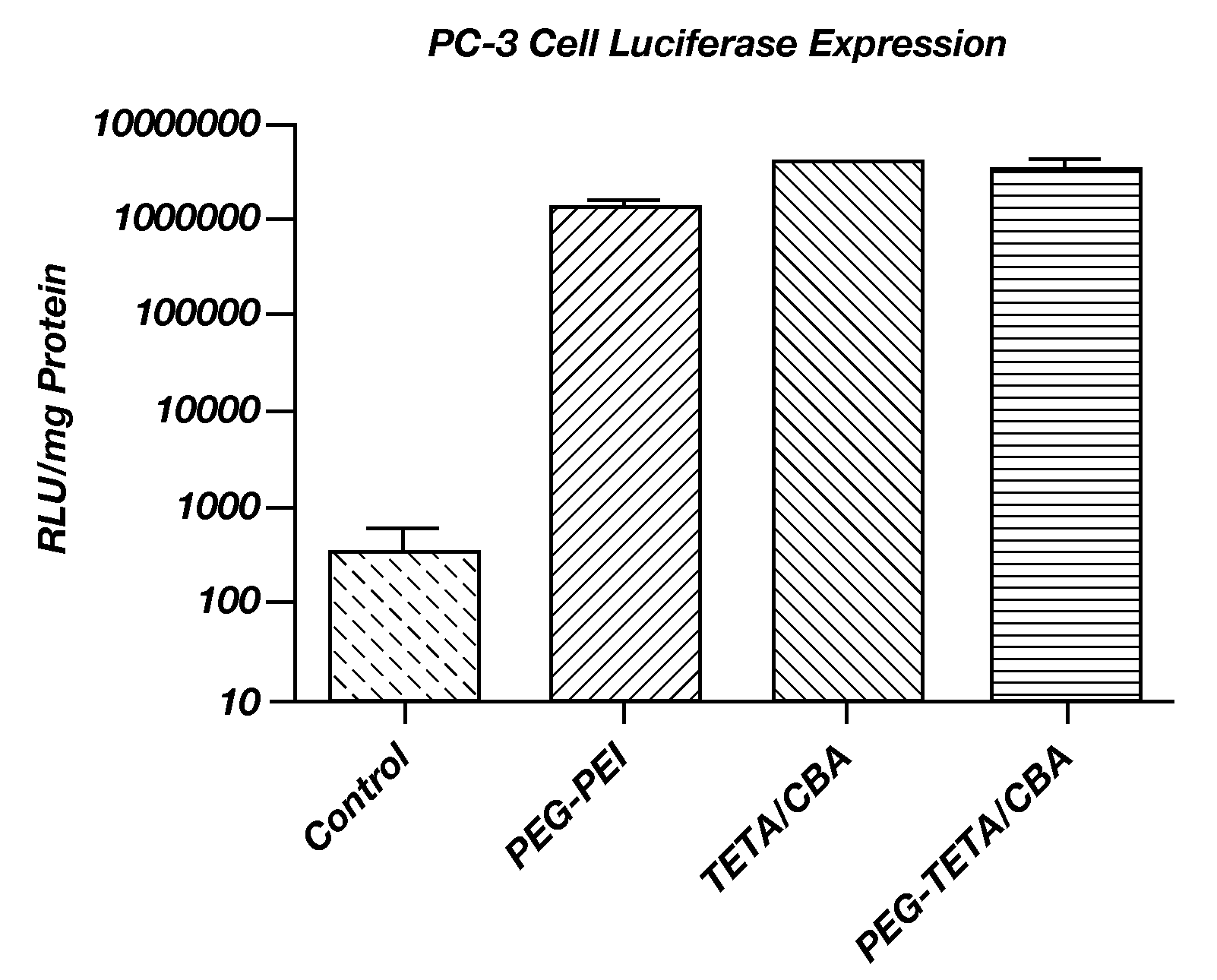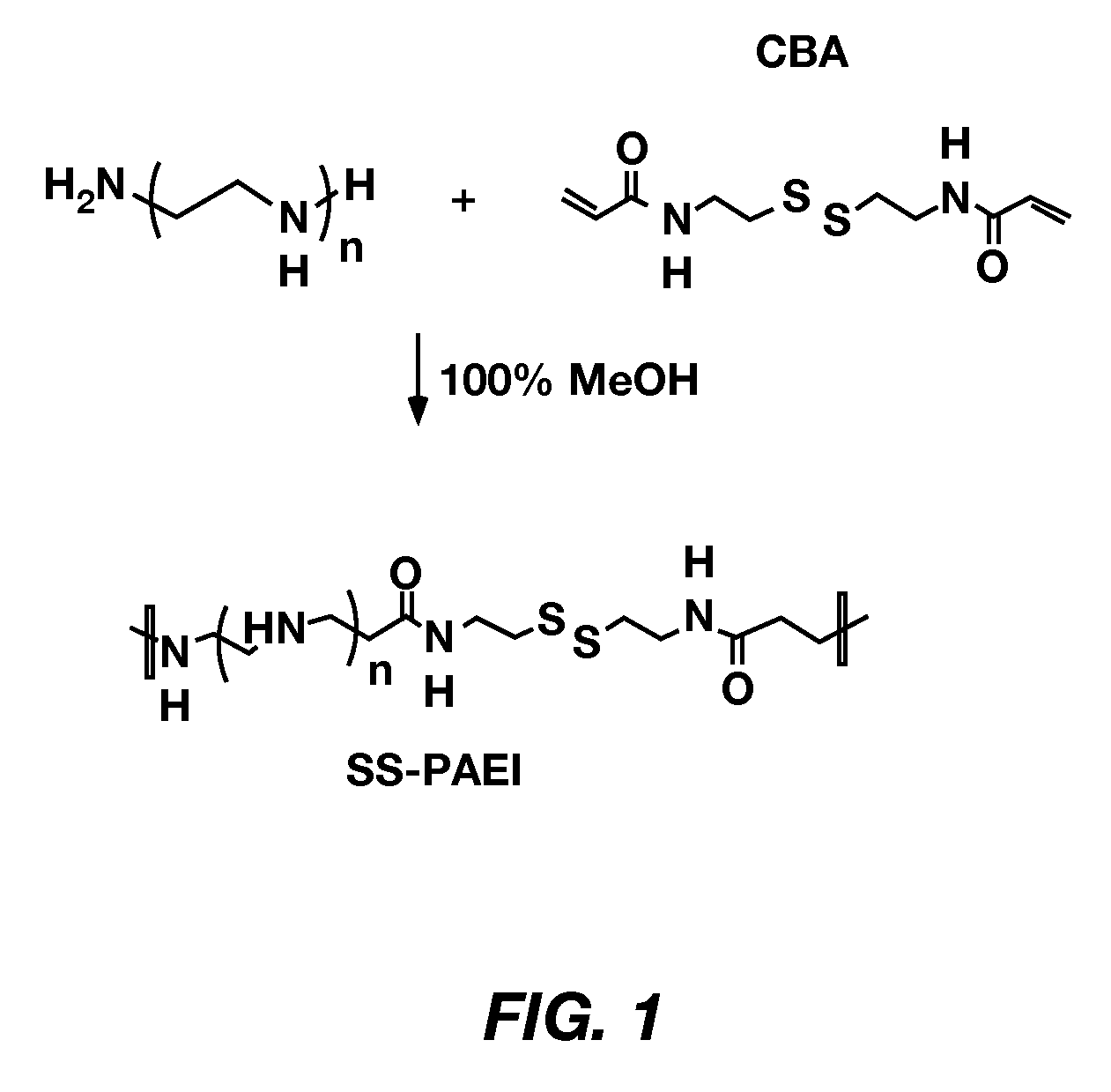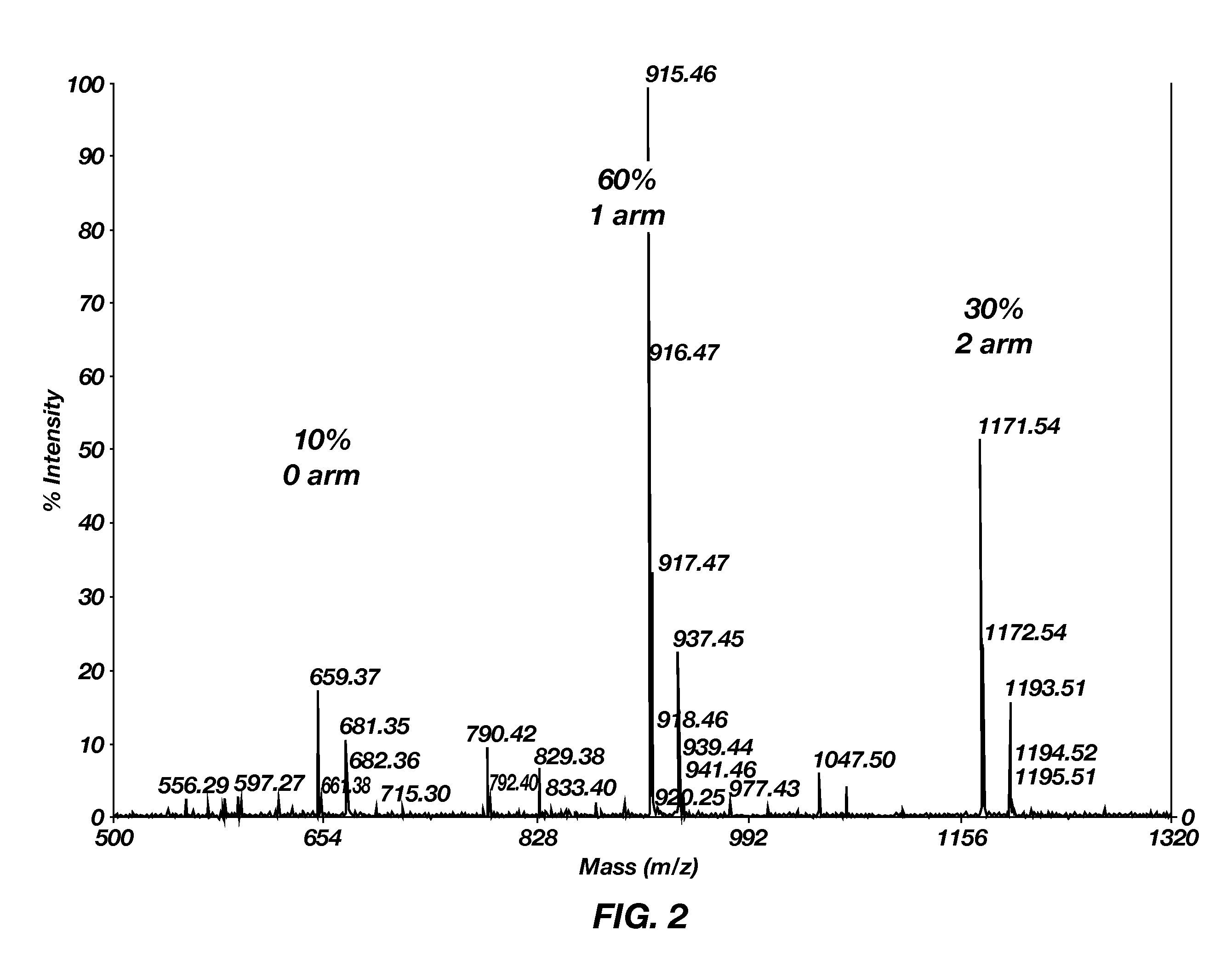Cleavable modifications to reducible poly(amido ethylenimine)s to enhance nucleotide delivery
a technology of ethyl ethylamine and polyethylene glycol, which is applied in the field of nucleotide delivery carriers, can solve the problems of only having the functionality of carriers, the molecular weight of polyethylene glycol, and the limited molecular weight of polyethylene glycol, and achieve the effect of enhancing nucleotide delivery
- Summary
- Abstract
- Description
- Claims
- Application Information
AI Technical Summary
Benefits of technology
Problems solved by technology
Method used
Image
Examples
example 1
[0045]Poly(TETA / CBA) was synthesized according to the scheme illustrated in FIG. 1 and described in L. V. Christensen et al., supra, at 30° C., 40° C., and 50° C.
[0046]The degree of branching of poly(TETA / CBA) prepared according to this example was characterized by matrix-assisted laser desorption / ionization time of flight (MALDI-TOF) mass spectrometry. The results show that poly(TETA / CBA) branching was about 90%. Synthesis at 30° C. or 40° C. (FIG. 2) resulted in about 90% of poly(TETA / CBA) repeat units containing at least one branched chain (arm), with the other 10% being linear. Within this population, about 60% contained one arm, and about 30% contained two arms. Synthesis at 50° C. (FIG. 3) resulted in a more dense architecture, with about 7% of the copolymers being linear, about 40% containing one arm, about 40% containing two arms, and about 10% containing three arms.
example 2
[0047]Transfection with poly(TETA / CBA) copolymers was evaluated in H9c2 cells using the plasmid, pBLuc, as a reporter. Cells were maintained in DMEM containing 10% FBS, streptomycin (100 μg / mL) and penicillin (100 units / mL) at 37° C. in a humidified atmosphere with 5% CO2. Cells were seeded 24 hrs prior to transfection in 24-well plates at initial densities of 4.0×104 cells / well. DNA was complexed with the poly(TETA / CBA) polymers at polymer / pBLuc w / w ratios of 6, 12, and 24. Controls contained no poly(TETA / CBA) polymer. Complexes were made in HEPES buffer and incubated for 30 min before use. At the time of transfection, the medium in each well was replaced with fresh serum-free medium. Polyplexes (0.5 μg DNA / well) were incubated with the cells for 4 hrs at 37° C. The medium was then replaced with 500 μL of fresh complete medium and cells were incubated for additional 44 hrs. The cells were then washed with pre-warmed PBS, treated with 200 μL cell lysis buffer and subjected to a free...
example 3
[0048]H9c2 cells were seeded in a 24-well plate at a density of 4.0×104 cells / well and incubated for 24 hrs. Poly(TETA / CBA) / pBLuc complexes of weight ratios (w / w) of 6, 12, and 24 and no polymer (control) were incubated with the cells for 4 hrs in serum-free medium followed by 20 hrs in complete medium. MTT solution (50 μL, 2 mg / mL) was then added and cells were further incubated for 2 hrs. The medium was removed and 300 μL DMSO was then added to each well. The absorption was measured at 570 nm using a microplate reader (Model 680, Bio-Rad Lab, Hercules, Calif.). The percentage relative cell viability was determined relative to control (untreated) cells, which were not exposed to transfection system and taken as 100% cell viability. All cytotoxicity experiments were performed in triplicate. Results are shown in FIG. 5. Cytotoxicity was essentially nil.
PUM
| Property | Measurement | Unit |
|---|---|---|
| weight ratio | aaaaa | aaaaa |
| weight ratio | aaaaa | aaaaa |
| weight ratios | aaaaa | aaaaa |
Abstract
Description
Claims
Application Information
 Login to View More
Login to View More - R&D
- Intellectual Property
- Life Sciences
- Materials
- Tech Scout
- Unparalleled Data Quality
- Higher Quality Content
- 60% Fewer Hallucinations
Browse by: Latest US Patents, China's latest patents, Technical Efficacy Thesaurus, Application Domain, Technology Topic, Popular Technical Reports.
© 2025 PatSnap. All rights reserved.Legal|Privacy policy|Modern Slavery Act Transparency Statement|Sitemap|About US| Contact US: help@patsnap.com



